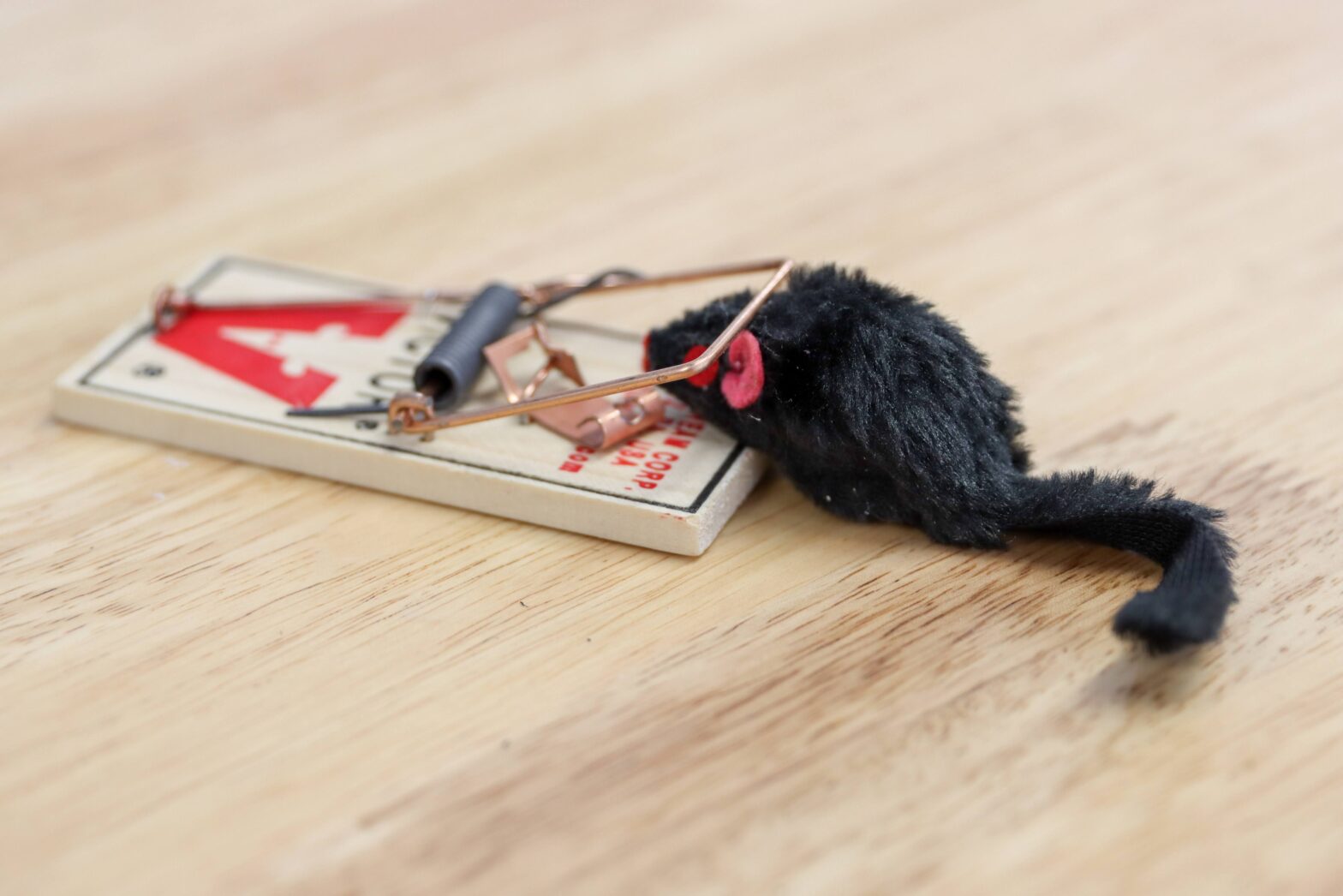Download the PDF version of this page here! A related webinar recording on this topic is available on the National Farmers Union YouTube channel.
Key Take-aways
- Reduce Attraction – Minimize available food and water near growing and storage areas (cull piles, standing water in a bucket, etc.) Obviously, you’re in the food production business, so there’s food and water around! But, making sure any compost piles, or cull piles are well away from the growing area will help reduce the “draw.” If you have containers of water that don’t need to be there, dump them or move them at the end of the day.
- Reduce Protection – Minimize “cover” – anything that provides protection from being seen by predators near growing areas. Mow regularly around growing areas and trim against high tunnel / greenhouse baseboards, avoid having piles of building material, row cover, etc. Ideally make them cross “open” ground to get to your crop. That makes them uncomfortable because it exposes them to predation and removes their preferred method of navigation. Rodents navigate well in tunnel-like enclosed spaces by keeping their whiskers in contact with the surroundings, so open things up. Try to stack stored material with at least 4-6” of space between the materials, the ground, and walls (the bigger the better) to avoid comfortable passage ways.
- Reduce Access – In buildings and tunnels, use rodent exclusion practices like solid, sealed baseboards, hardware cloth, and curbs to limit easy access to the inside.
- Reduce Population – It’s often the first place people land, but trapping and killing is unlikely to be effective in the long-term without the other measures above. The populations are often large when conditions are comfortable. Trapping and killing is most important and effective when there is a very acute problem in a more contained space (market, storage, etc.) There are lots of options from commercial traps, to bait stations, to air rifles, to birth control which will depend on your specific ethos and management approach.
Background
When considering storage rooms and wash/pack sheds with growers there is one topic that is sure to strike a nerve: RODENTS.
This document is intended to provide summary information about measures you can take to reduce crop losses from these pests. It is the result of a review of current literature on the topic and feedback from the Listserv of the Vermont Vegetable and Berry Grower’s Association (VVBGA). This document includes both active measures (traps, rodenticides, FSMA compliant cats and ball pythons, etc.) and passive measures (sealing, doors, packing, hardware cloth, novel construction, accepting the loss, selling everything early). But why are these creatures so challenging? Here’s some background1:
House Mice Can
- Enter openings larger than 1/4 inch
- Jump as high as 18 inches
- Travel considerable distances crawling upside-down along wire
- Survive and reproduce at a temperature of 24°F if adequate food and nesting material are available.
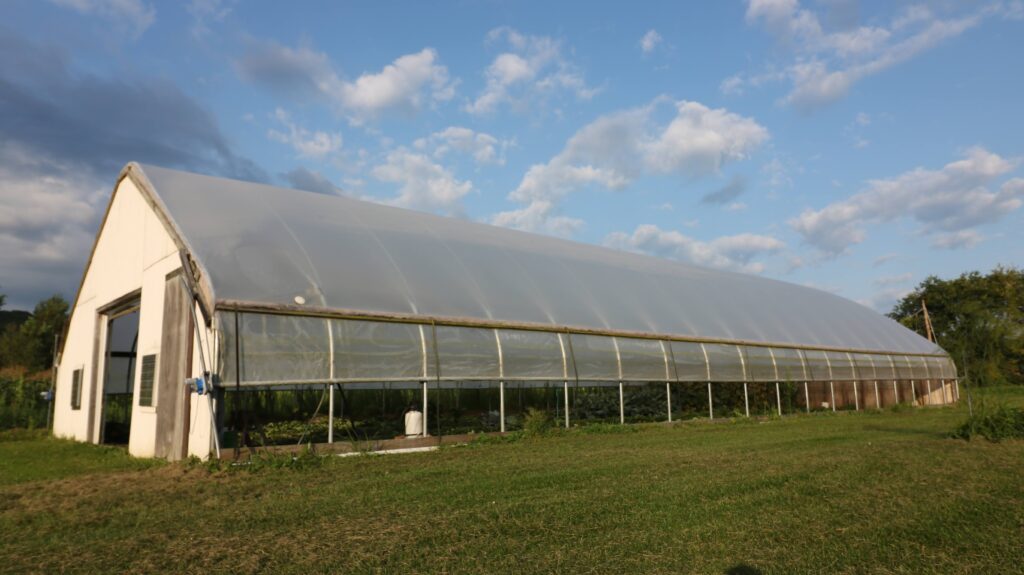
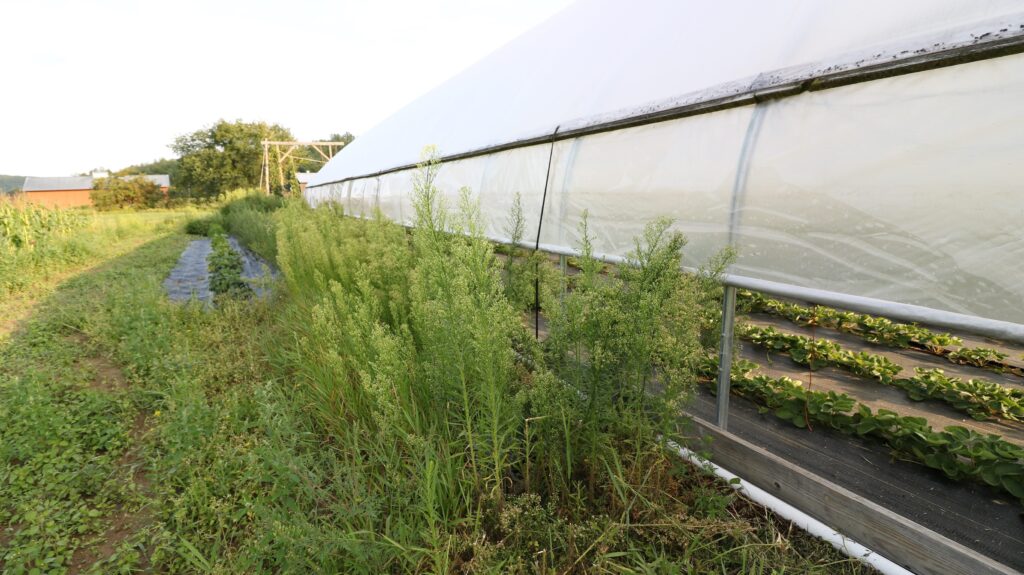
Rats Can
- Crawl through or under any opening higher or wider than 1/2 inch
- Climb the outside or inside of vertical pipes and conduits up to 3 inches in diameter
- Jump from a flat surface up to 36 inches vertically and as far as 48 inches horizontally
- Drop 50 feet without being seriously injured
- Burrow straight down into the ground for at least 36”
- Swim as far as 1/2mi in open water, dive through water traps in plumbing, and travel in sewer lines against a substantial water current.
“To deal with rats, you’ve got to think link a rat!”
– Anonymous Farmer
Bottom Line
Cleanliness and Sanitation
Keep food sources well contained and sealed up, reduce “harborage” (places they can hide and live including weeds around the edge of a building), minimize available standing water. In short, make it unappealing and uncomfortable for them.
Rodent Deterrent Construction
Keep them out of the building. [References 1-3 provide very detailed guidance and novel, passive and relatively inexpensive construction ideas] Some examples from the references include keeping all wood products like cardboard, roots, or lumber off the ground and away from the building. Installing proper drainage with sand, stone and proper slope away from your building helps reduce moisture which can carry other pests like beetles and termites. Think about your exterior landscaping and its ability to trap moisture against the building. Keeping grass and weeds trimmed won’t leave a place for rodents to hide and travel. Think about all possible points of entry, sills, doors, windows, roofs. Mice can sneak into small holes and cracks so do your best to seal up all possible points of entry.
Population Reduction
Bait, trap, kill.
Using snap traps, sticky pads, poisonous bait are all the most effective ways of dealing with a rodent problem [References 5-7].
Responses from the VVBGA LISTSERV
The following are responses from Vermont growers. These are some of their challenges and solutions related to rodents on their farms.
- I have had over 20% of my sweet potatoes damage by voles. Usually the largest sweet potatoes are the ones half eaten. The next year I put five “yard windmills” in the sweet potato bed, 100 ft. long, along with a half stick of gum under the black plastic by each plant – cheap gum from the discount food store. Both were done after I removed the row covers and before the vines spread. That reduced the damage to less than 5%. Very anecdotal and empirical data but worth exploring. Supposedly the voles do not like vibration of the windmill and eating the gum gives them a bellyache, if fatal I do not know. Bigger windmills, four inches in diameter and larger, with metal post seem to work better. How much gum is actually needed I do not know. A SARE grant in your future.
- Not the cheapest retrofit, but have had the best luck with making all walls tin or concrete, and having rat traps permanently set at every overhead door jamb, since the seal is not 100%. Ventilate with in-wall intake and exhaust fans instead of opening doors.
- I recently tried the tin cats and was happy. Baited them by putting small amount of oats in the trap and tilting it so the grain slid to the end where the screen was. After the mice got a few seed through the screen, they were drawn into the trap to get the remainder. Two mice in the same trap on the first night. The downside is that you have to clean out all the grain each time so it doesn’t hamper the trap mechanism. Have used Contract waxy block in bait stations for at least 4 years. Switching to a different bait because I think they are starting to get a resistance.
- I’ve been using that old root cellar all winter for 3 years now without any rodent problems. The process of having someone cement hardware cloth over every crack and crevice was time-consuming but really seems to have worked. I think I finally got rid of the rats in my toolshed through a combination of trapping and disturbing their nesting spots. I’m curious about rodent solutions that apply to the field and high tunnel. I’ve tried to keep cats but the fishers get them.
- I have not had a single animal in the new barn that I built with the 12” concrete knee wall. I partly contribute the success to the fact that I do not set the bins on the ground. They are filled on the trailer and go directly from the trailer to the barn. This reduces the chance that a hitchhiker will take a ride into the barn.
- We are a very small pumpkin farm and don’t have the storage needs for food, but I use lots of snap traps and dump those little, dead vermin bodies while wearing a happy smile!
- We have only killed rats by accidentally moving a pallet onto one. Can’t bait them. They are very intelligent.
- “We have a great barn cat and a Jack Russell terrier for our farm.”
- Mice – kernel of corn wedged into mousetrap trigger covered in peanut butter. Rats – same as above but do not the set the trap for several nights and remove all other food sources (in chicken hutch empty all food containers) then set the trap. Putting a milk crate over the trap prevents chickens, cats, dogs from getting caught. Also works with chipmunks, and occasionally with red squirrels. Voles – hard to trap, run them down and stomp.
Construction Practices to Block Rodent Intrusion
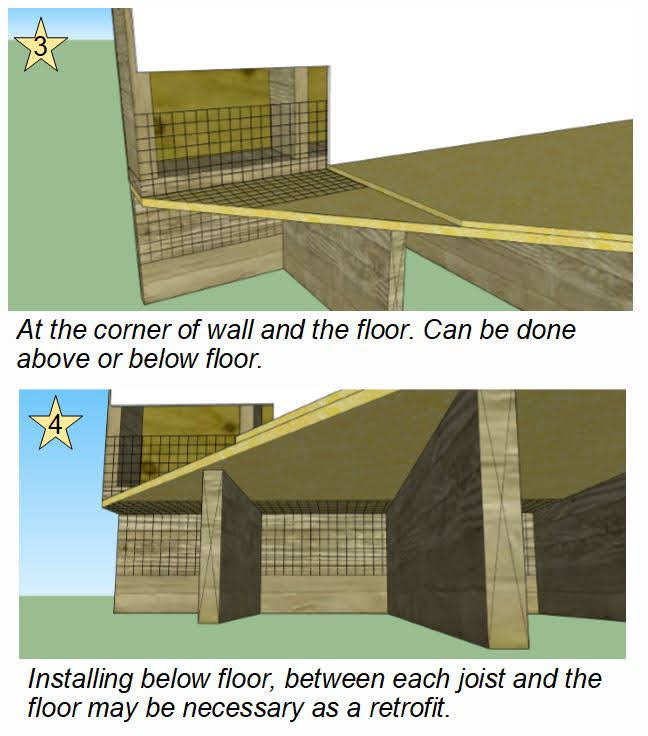
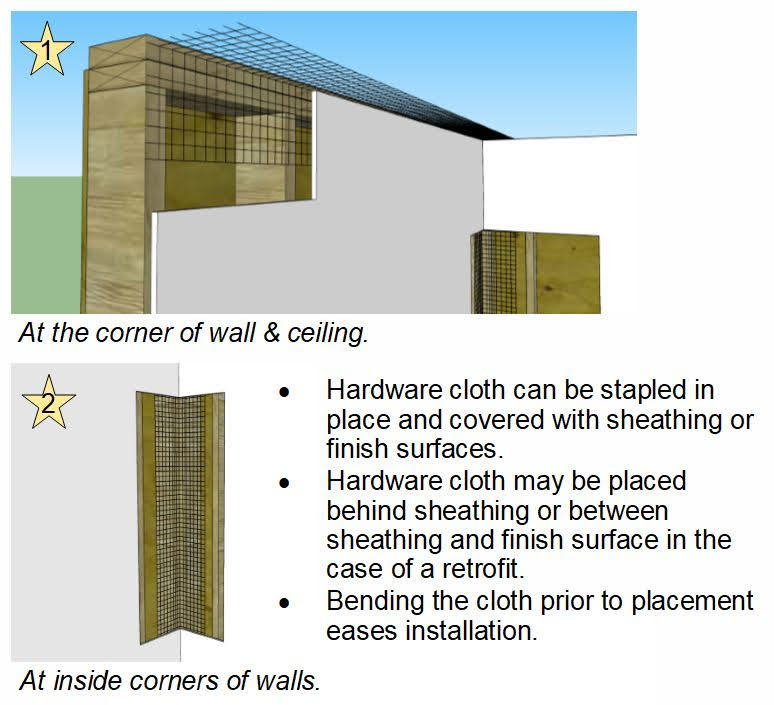
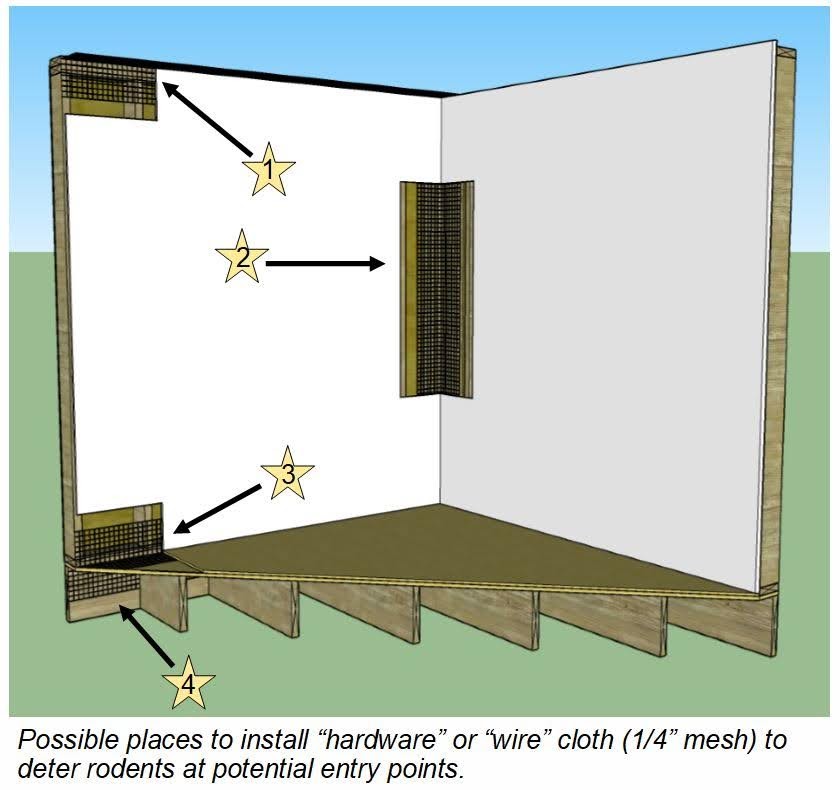
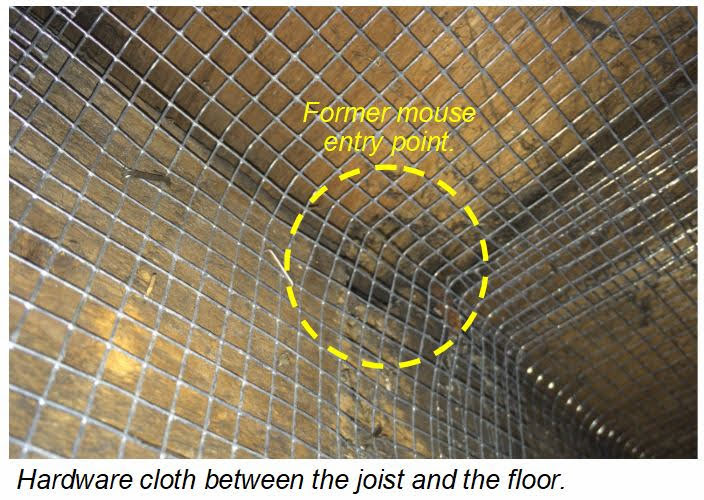

Chris teamed up with the farmers of Good Samaritan Farm in Atlanta, GA and Yolanda Gonzalez, Urban Agriculture Specialist with Cornell Cooperative Extension in this “Stories from the Field” episode to share resources and strategies they use to reduce, prevent, and eliminate rat problems.
REFERENCES
- Baker R., Bodman G. and Timm, R. 1994. Rodent-Proof Construction and Exclusion Methods. The Handbook: Prevention and Control of Wildlife Damage. Paper 27. http://digitalcommons.unl.edu/cgi/viewcontent.cgi?article=1025&context=icwdmhandbook
- Hoddenbach, G., Johnson, J., Disalvo, C. 1997. Rodent Exclusion Techniques. A Training Guide for National Park Service Employees. National Park Service. http://www.ehs.ucsb.edu/files/docs/e
h/ihrodentexclusion.pdf - Simmons, S. 2005. Pest Prevention Construction Guidelines and Practices. CASBO Journal. http://www.cdpr.ca.gov/docs/pestmgt/pubs/casbo_article.pdf
- UMass Extension. 2008. Rodent Control on Farms. Fact Sheet – https://ag.umass.edu/sites/ag.umass.edu/files/fact-sheets/pdf/RodentControl08-44.pdf
- University of Maryland Extension. 2014. Rodent Control on Small Poultry Farms. Fact Sheet. https://extension.umd.edu/sites/default/files/_docs/publications/FS-
- 985%20Rodent%20control%20on%20small%20poultry%20farms.pdf
- Pierce, R. 1982. Bait Stations for Controlling Rats and Mice. Fact Sheet G-9444. University of Missouri Extension. http://extension.missouri.edu/p/G9444
- Vantassel, S. M., Hygnstrom S. E. and Ferraro, D. M. 2012. Bait Stations for Controlling Rats and Mice. Fact Sheet G1646. https://wildlife.unl.edu/pdfs/bait-stations-controlling-rats-mice.pdf.

